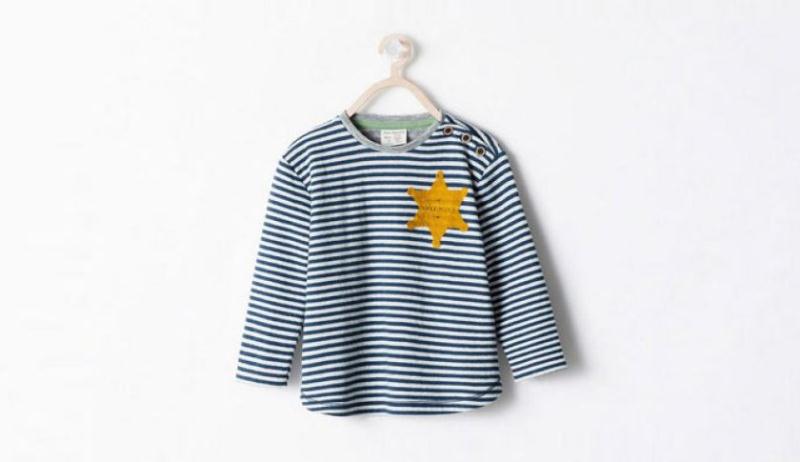First a swastika handbag, now a concentration camp shirt. The fast fashion retailer is perhaps too fast for its own good.
Spanish retailer Zara, known for its affordable apparel and accessories, has built an international empire of more than 2,000 stores on its ability to set and follow fashion trends.
But you know what’s never in style? Children’s clothes that are near replicas of concentration camp uniforms. Also: swastikas.

On Wednesday, Zara confronted a wave of criticism after the blog +972 pointed out that Zara’s “striped sheriff t-shirt” for kids looked a whole lot like the striped garments and yellow stars that Jews were forced to wear during the Holocaust.
It’s hard to argue with that assessment, and Zara didn’t try to. It told the blog that the shirt was inspired by classic western films (the word “sheriff” appears, faintly, on the star) and apologized for causing any offense. It said the unsold shirts would be “reliably destroyed.”
It might be easier to look past this incident if a similar one had not transpired in 2007, when Zara sold a $78 handbag displaying four green swastikas. When customers complained, Zara apologized and said it hadn’t realized that the handbag’s pattern contained swastikas. The bag came from an Indian supplier and the approved design didn’t feature the symbols, the company said at the time.
The two screw-ups are surprising, first, because of their blatant offensiveness and, second, because they come from a company that, in most other senses, has performed tremendously well. Zara’s parent Inditex, which owns seven other retail brands, recorded profits of $550 million—propelled mainly by Zara’s growth—and beat analyst expectations in its most recent quarter; all of this in a unforgiving retail market.
But Zara’s secret to success could also be to blame for its political gaffes: that is, its incredible production speed.
The company lives and dies by how quickly it can get its products into its stores and on to the backs of its customers. “The key to their entire business is speed; speed is life. That’s what fast fashion means,” says Howard Davidowitz, chairman of Davidowitz & Associates, a retail industry consultancy. Zara differentiates itself by coming up with creative designs in a very timely manner, he says. If a retailer offers the same clothes as the next, the only differentiation point is who marks them down first.
Inditex did not return a request for comment.
Traditional retailers—like The Gap, for instance—typically decide on the majority of their designs about six months in advance, Davidowitz says. Such pre-planning secures factory time and locks in manufacturing costs.
Zara determines some of its designs in advance, but it places about half of its orders in the middle of each fashion season in order to cash in on ongoing trends. Zara can operate this quickly because it has in-house factories that reserve 85% of their production capacity for last-minute orders. The end result is a two-week turnaround time between a designer’s concept and an item’s potential sale. This speediness is reflected in the 840 million garments that Zara parent Inditex produced in 2012, according to The New York Times, and the twice-a-week replenishment of its stores’ stock.
“Zara has constant newness. The newness just doesn’t stop,” Davidowitz says. That fashion churn has made Zara’s parent company Inditex, with 6,300 stores in 87 countries, the largest fashion retailer in the world. But it looks like it also translates to occasional carelessness in its design vetting process.
“Zara doesn’t want to bore the customer. The customer loves new things,” Davidowitz says. “When you’re in that kind of environment, some crazy things slip through.”
(Correction: An earlier version of this story misstated the financial performance of Zara’s parent company. It reported nearly $550 million in profits in the latest quarter)
